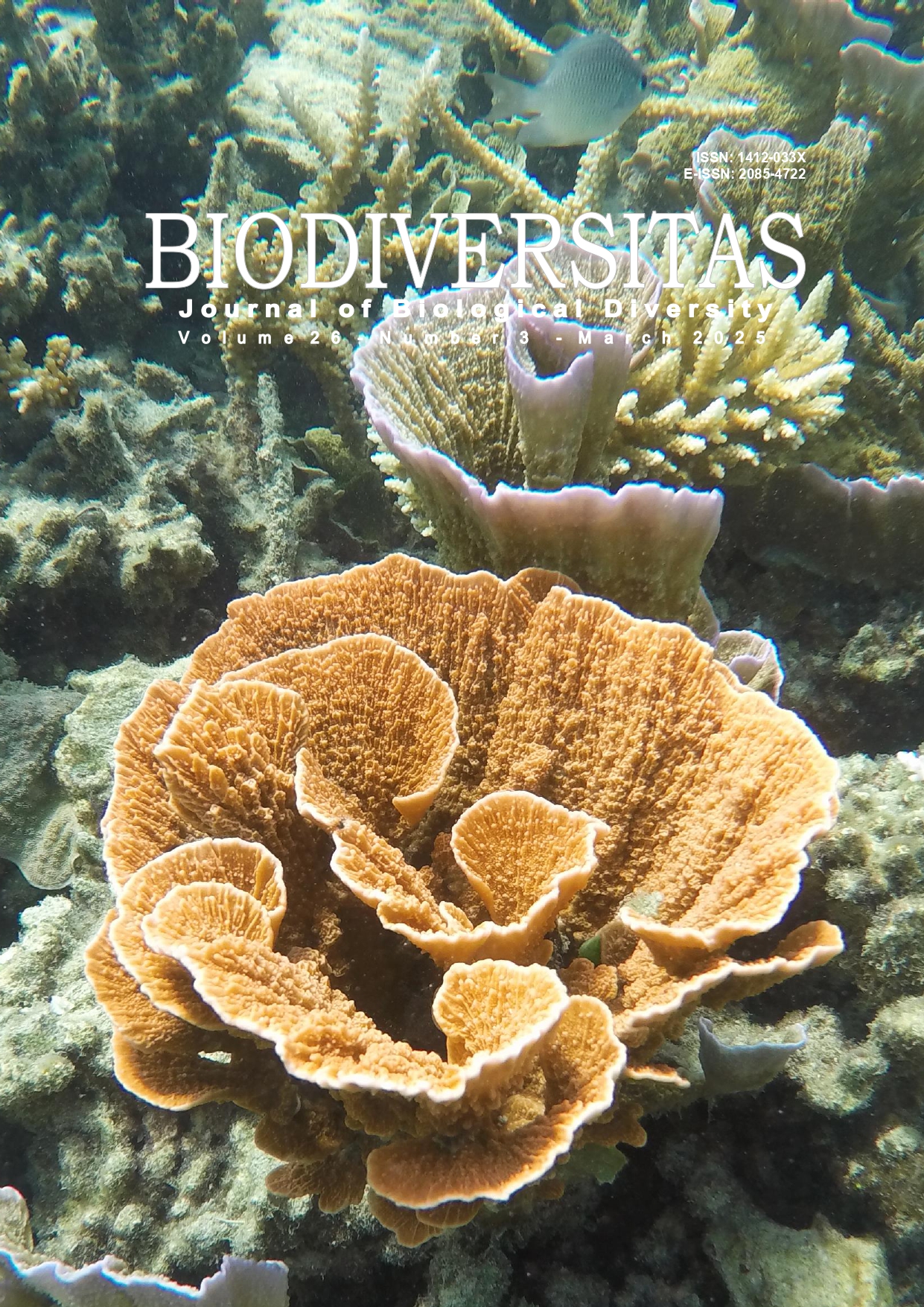Exploration of bacteria from Setigi Lake, Gresik District, Indonesia as a candidate for industrial microalgae production
##plugins.themes.bootstrap3.article.main##
Abstract
Abstract. Prabaningtyas S, Witjoro A, Laili AN, Devi AS, Sa’diyyah C, Fitria M, Qomaria ZL, Rohman F, Suryanto H, Mawadah I, Saputri DAE, Sa’diyah W. 2025. Exploration of bacteria from Setigi Lake, Gresik District, Indonesia as a candidate for industrial microalgae production. Biodiversitas 26: 1135-1144. The diversity of microorganisms leads to the utilization of biological resources. The aim of this study was to investigate the community structure of microalgae and identify and assess the microbial community and bacterial potential that were collected from Lake Setigi in Gresik District, East Java, Indonesia. The field sampling was done by collecting water from 0, 50, and 100 cm depths. Microalgae were identified according to the guidebook, while the bacterial genome was isolated for metagenomic analysis. The results revealed varying taxa numbers and density of microalgae in Lake Setigi, such as 54 species at a depth of 0-10 cm (35.63 × 108 cells/mL), 42 species at a depth of 50 cm (6.12 × 108cells/mL); and 24 species at a depth of 100 cm (1.56 × 108 cells/mL). Microalgal diversity was categorized as intermediate, well-distributed, or predominant. The three most abundant bacterial phyla were Proteobacteria (56%), Bacteroidetes (16%), and Actinobacteria (13%). The potential functions of the selected bacterial isolates and their species were determined based on the similarity in 16S rRNA gene phylogenetic reconstruction. Isolates IAA17 (Delftia sp.), P15 (Pseudomonas libanensis), S14 (Bacillus subtilis), and SG5 (Lysinibacillus sp.) produced IAA, phosphate solubilization, vitamin B12, and ammonium, respectively, as a result of nitrogen-fixing activity. These abilities of bacteria underline their potential roles in biogeochemical cycling and ecosystem processes.


 https://orcid.org/0000-0003-1617-6310
https://orcid.org/0000-0003-1617-6310